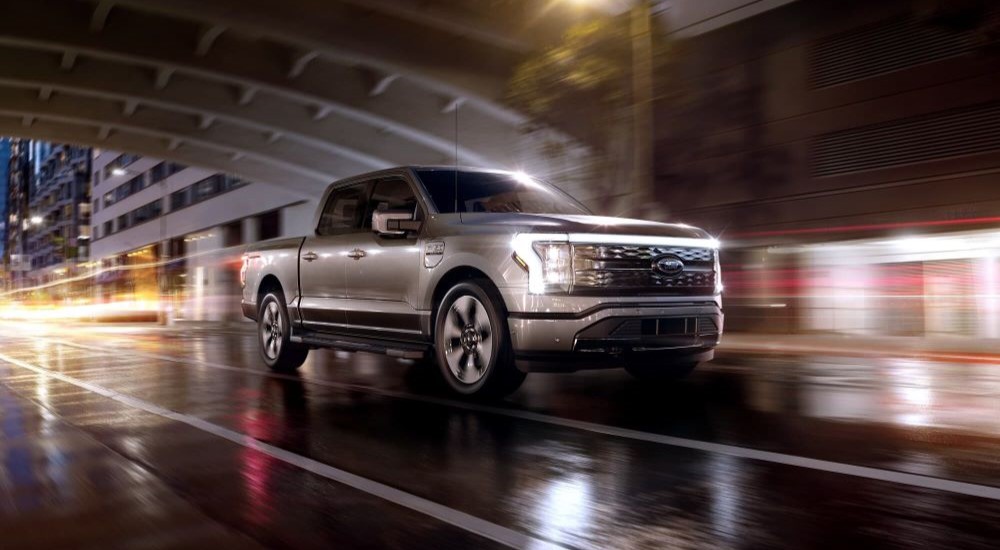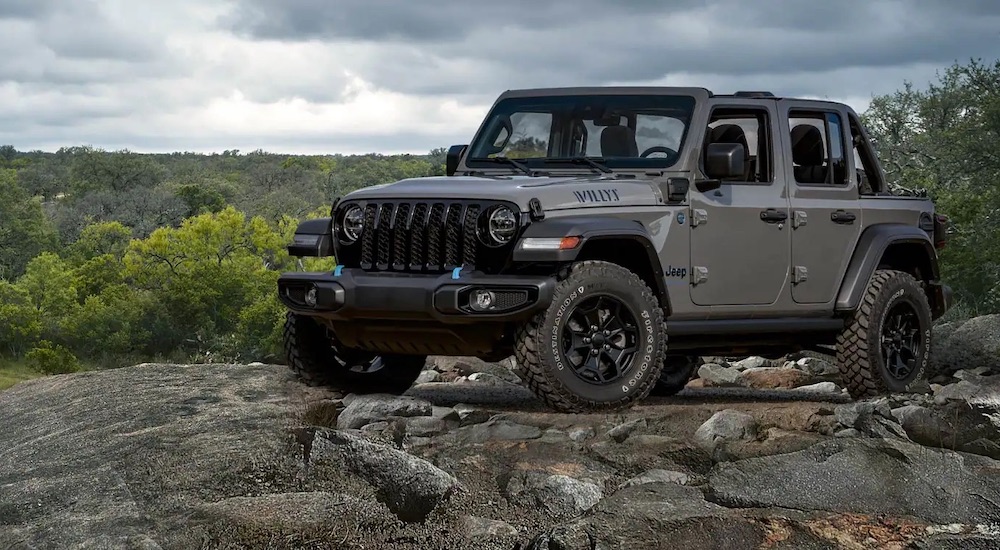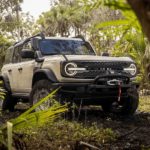News headlines in the automotive industry looked much different ten years ago as hybrids became mainstream, America mourned the loss of the legendary Carroll Shelby, and the industry flourished as manufacturers did everything possible to meet heightened demand from consumers. Today, hybrids are popular, but they share the spotlight with EVs that usher us into an electrified future where recharging is as easy as plugging in our smartphones. Likewise, automakers experience a different type of demand as they recover from the effects of the pandemic, tackling component shortages and production halts that have left many dealership lots empty and many buyers opting for used models or custom builds. Here’s a closer look at the latest headlines and where the industry is today.
Ford Halts, Then Resumes Production of the F-150 Lightning
As one of the newest entries into the Ford lineup, the F-150 Lightning has proven that an electric truck can deliver what’s expected of a “Built Ford Tough” road warrior. Production began in April 2022 at the Rouge Electric Vehicle Center in Dearborn, Michigan, meaning many models have been delivered to customers or are sitting at dealerships across the country ready for delivery. However, production of the latest batch came to a lightning-fast halt in February when quality inspections revealed a potential issue with the EV’s battery.
Initially, Ford planned to resume production on February 24th, but the delay was extended to March 13th as the automaker concluded its investigation in partnership with SK On, the battery cell supplier. As of March 2, 2023, Ford explained that the extension allowed new battery packs to be delivered to the plant to prevent further delays. Even then, Ford promises to continuously monitor production to ensure every Lightning meets the company’s high-quality standards before rolling off the production line.

GM Halts Production for A Different Reason
Many dealerships are still waiting on new models as automakers slowly recover from supply chain issues over the last few years. Fortunately, General Motors’ dealerships don’t have that problem. Instead, General Motors is in a better position today with production climbing while demand for models like the Chevrolet Silverado 1500 and its GMC sibling, the Sierra 1500, remain consistent. While this isn’t necessarily a bad situation to be in, General Motors doesn’t want more than 60 days’ worth of inventory ready to go.
General Motors remedied the issue by shutting down its truck manufacturing plant in Fort Wayne, Indiana, for two weeks beginning March 27, 2023. The plant produces 1,300 Silverado 1500 and Sierra 1500 trucks daily, an impressive feat that ensures the best-selling trucks are readily available. With production temporarily stopped, General Motors will fine-tune the plant’s production schedule to generate a better balance of supply and demand that will accommodate dealership needs and current industry trends.
Let’s Make Some Noise: Hybrid and EV Noise Concerns
Hybrid and electric vehicles are notoriously quiet, so much so that federal regulations require automakers to equip newer models with audible alerts that alert pedestrians, specifically visually impaired and blind individuals, of their presence on the road. Some automakers are taking this a step further and adding artificial engine sounds that make hybrid or electric powerplants louder or more akin to a traditional internal combustion engine. So, what’s the concern?
The technology is helpful, but it’s opened Pandora’s Box and ignited a series of other concerns. The National Highway Traffic Safety Administration is determining if the law, which went into effect in 2018, should apply to older models. If that’s the case, how would equipping nearly nine million electric vehicles and hybrids with the technology would work logistically? If the new standard goes into effect, models over the last 26 years would be affected, creating an unfathomable logistical minefield.
Ford Answers the Demand for Integrated Bed Steps
Accessing your cargo in the bed of an F-150 or Super Duty can be a chore. You’re either using the wheel as a step or pulling yourself over the tailgate with a truckload of oomph. Chevrolet and GMC remedied the issue decades ago by adding bumper steps on the Avalanche and Sierra. Ford followed suit in 2009 when it introduced the fold-out tailgate step on the F-150. However, that step has long disappeared, and Ford fans have noticed.
GMC introduced its industry-leading multifunctional tailgate that adds to the Sierra’s integrated bumper steps by including a full-width step in the tailgate. Chevrolet upped the ante again in 2020 by adding bedside steps near the rear wheel opening and making the bumper steps larger. While we heard nothing but crickets from Ford, the American automaker is finally answering our cries and adding rear bumper corner steps and bedside steps to its 2023 Super Duty lineup.
EVs Continue to Steal the Spotlight
Just as hybrids became mainstream a decade ago, electric vehicles permeate the global automotive landscape as automakers introduce new models that promise exceptional capability and innovative technologies. Industry headlines are abuzz with updates that introduce us to upcoming models like the Buick Electra, expected in 2024 as an all-electric SUV that builds on its 1959 predecessor. Alongside the Buick, General Motors teases the hand-built Cadillac Celestiq that’s anticipated to cost around $300,000. More attainable models like the Chevy Blazer EV will soon hit the market, and join others like the Equinox and Silverado EV, as well as rivals like the Ford Explorer EV, GMC Sierra EV, and Honda Prologue.
One of the most notable additions to the EV industry is the Dodge Charger Daytona SRT EV. Expected in 2024, the all-electric powerhouse is a surprise after Dodge announced the end of an era for the Charger in 2022. However, Dodge meant to say that it was the end of the Charger’s gas-powered chapter, with the Daytona SRT EV running on an 800-volt Banshee platform and promising better performance than the legendary Hellcat. Time will tell if this concept fulfills that promise.

The Bronco-Wrangler Rivalry Pays Off
The Ford Bronco is giving the Jeep Wrangler a run for its money, proving that Americans are open to the idea of an adventurer that doesn’t bear the Jeep name. Production of the Bronco is slow and steady, with many worrying that supply chain issues and component shortages would cause problems for the newly reintroduced SUV. However, that doesn’t seem to be the case, as the Bronco is positioned to catch the Jeep Wrangler in total sales.
While this is great news for Ford fans, the rivalry also benefits Wrangler drivers because it shows Jeep what’s possible or what’s missing on the Wrangler. Over the last few years, Jeep has taken several design cues from the Bronco. For example, Jeep now offers a factory-installed mirror kit that positions the exterior mirrors on the A-pillars instead of the doors. This is similar to the Bronco, and keeps the mirrors in place when the doors are removed. In addition, the 2023 Wrangler introduces a few more Bronco-inspired changes like weatherproof seating and washout floors. It’s hard to imagine these weren’t already an option on the adventure-ready Wrangler.
The Future Looks Bright
The industry is vastly changing as automakers like Ford, Chevy, Jeep, GMC, Dodge, Ram, Tesla, and many others work to build bigger, better, and more capable vehicles. This pursuit of more and the rivalry to outdo one another are paired with the industry’s move to create a greener, electrified future. As a result, our headlines are filled with frequent updates about electric vehicles (both their successes and failures) and innovative technologies that promise to transform our experience behind the wheel in the best possible ways.


